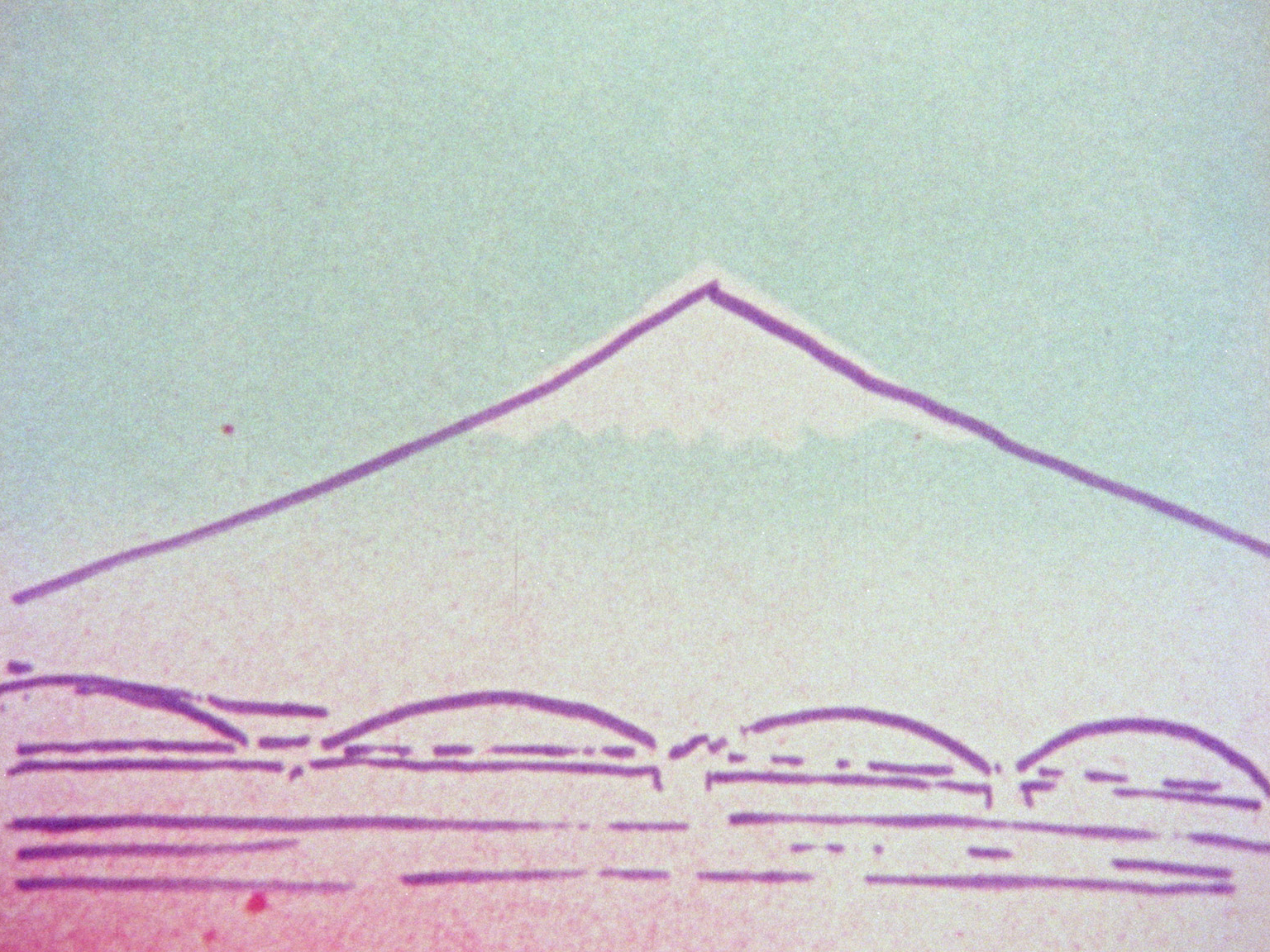
Fuji jumps from filmed footage of Breer’s wife Frannie by a train window to a rotoscoped sequence of a ticket collector and countless drawn depictions of Mount Fuji, all of which slip back and forth into and out of abstraction.
EN
“A poetic, lyrical, rhythmic, riveting achievement (in rotoscope and abstract animation), in which fragments of landscapes, passengers, and train interiors blend into a magical color dream of a voyage. One of the most important works by a master who – like Bruce Conner, Stan Brakhage, James Broughton – spans several avant-gardes in his ever more perfect explorations.”
Amos Vogel1
“I had a neat little fifty-dollar Super-8 Kodak camera, which I still use. A no-focus, idiot camera. I shot the footage out the window of the Tokaido Express, a 135-mile-an-hour train. You can't go to an exotic place like Japan and not record your trip to show the folks, so that's what it was, just a mindless bunch of footage out the window, without the possibility of refined focus and with no thought of the future. I didn't dig that film up until three years later when I was fishing around for an excuse to do some more rotoscoping. What attracted me to the footage was the mountain in the background and the possibility for motion perspective in the foreground. The film plays with deep space and the flat picture plane of the screen.
The sound was put on six months after I finished the film. I used all kinds of contraptions in my studio to create the train ride noises. Of course the Tokaido Express doesn't sound anything like my clackity clack, but the soundtrack does evoke ‘train’, and it's the rhythm I thought I needed for that film.”
Robert Breer2
“Here, Breer is manipulating a technique commonly used in Hollywood cartoons (and, more recently, Japanese anime): rotoscoping. Breer takes rotoscoping, a technique intended to create smooth motion – Disney’s animated features, such as Snow White and the Seven Dwarfs (1937) and Cinderella (1950), used it extensively for their human characters – and uses it in quite a different way. (...) Perhaps most daringly, Breer includes bits of the original live-action footage from which he made his tracings. As a result, we are led to see many of the images in the film as tracings.”
David Bordwell3
- 1Amos Vogel, “Independents: The Avant-Garde of the Seventies,” Film Comment, May-June (1975), 35.
- 2Scott MacDonald, “Robert Breer,” A Critical Cinema 2: Interviews with independent filmmakers (Berkeley: University of California Press, 1992), 46-47.
- 3David Bordwell & Kristin Thompson, “An Example of Experimental Animation: Fuji,” Film Art: An Introduction (New York: McGraw-Hill, 2010, 9th ed.), 388-390.

